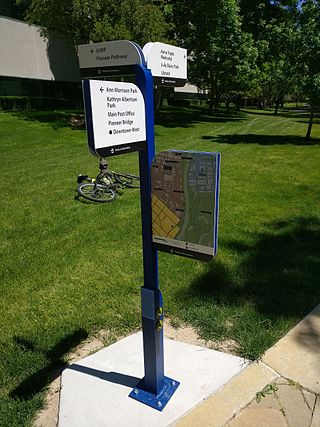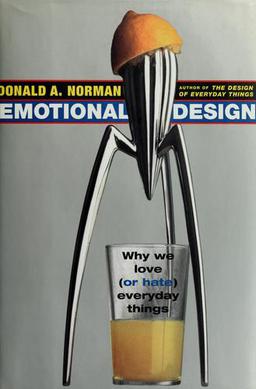Related Research Articles

A prototype is an early sample, model, or release of a product built to test a concept or process. It is a term used in a variety of contexts, including semantics, design, electronics, and software programming. A prototype is generally used to evaluate a new design to enhance precision by system analysts and users. Prototyping serves to provide specifications for a real, working system rather than a theoretical one. In some design workflow models, creating a prototype is the step between the formalization and the evaluation of an idea.

Usability can be described as the capacity of a system to provide a condition for its users to perform the tasks safely, effectively, and efficiently while enjoying the experience. In software engineering, usability is the degree to which a software can be used by specified consumers to achieve quantified objectives with effectiveness, efficiency, and satisfaction in a quantified context of use.
Design research was originally constituted as primarily research into the process of design, developing from work in design methods, but the concept has been expanded to include research embedded within the process of design, including work concerned with the context of designing and research-based design practice. The concept retains a sense of generality, aimed at understanding and improving design processes and practices quite broadly, rather than developing domain-specific knowledge within any professional field of design.
Participatory design is an approach to design attempting to actively involve all stakeholders in the design process to help ensure the result meets their needs and is usable. Participatory design is an approach which is focused on processes and procedures of design and is not a design style. The term is used in a variety of fields e.g. software design, urban design, architecture, landscape architecture, product design, sustainability, graphic design, planning, and health services development as a way of creating environments that are more responsive and appropriate to their inhabitants' and users' cultural, emotional, spiritual and practical needs. It is also one approach to placemaking.

Emotional Design is both the title of a book by Donald Norman and of the concept it represents.
Human-centered computing (HCC) studies the design, development, and deployment of mixed-initiative human-computer systems. It is emerged from the convergence of multiple disciplines that are concerned both with understanding human beings and with the design of computational artifacts. Human-centered computing is closely related to human-computer interaction and information science. Human-centered computing is usually concerned with systems and practices of technology use while human-computer interaction is more focused on ergonomics and the usability of computing artifacts and information science is focused on practices surrounding the collection, manipulation, and use of information.
Service design is the activity of planning and arranging people, infrastructure, communication and material components of a service in order to improve its quality, and the interaction between the service provider and its users. Service design may function as a way to inform changes to an existing service or create a new service entirely.
Critical design uses design fiction and speculative design proposals to challenge assumptions and conceptions about the role objects play in everyday life. Critical design plays a similar role to product design, but does not emphasize an object's commercial purpose or physical utility. It is mainly used to share a critical perspective or inspire debate, while increasing awareness of social, cultural, or ethical issues in the eyes of the public. Critical design was popularized by Anthony Dunne and Fiona Raby through their firm, Dunne & Raby.
Design methods are procedures, techniques, aids, or tools for designing. They offer a number of different kinds of activities that a designer might use within an overall design process. Conventional procedures of design, such as drawing, can be regarded as design methods, but since the 1950s new procedures have been developed that are more usually grouped together under the name of "design methods". What design methods have in common is that they "are attempts to make public the hitherto private thinking of designers; to externalise the design process".
Empathic design is a user-centered design approach that pays attention to the user's feelings toward a product. The empathic design process is sometimes mistakenly referred to as empathetic design.
Design thinking refers to the set of cognitive, strategic and practical procedures used by designers in the process of designing, and to the body of knowledge that has been developed about how people reason when engaging with design problems.
Contextual design (CD) is a user-centered design process developed by Hugh Beyer and Karen Holtzblatt. It incorporates ethnographic methods for gathering data relevant to the product via field studies, rationalizing workflows, and designing human–computer interfaces. In practice, this means that researchers aggregate data from customers in the field where people are living and applying these findings into a final product. Contextual design can be seen as an alternative to engineering and feature driven models of creating new systems.

Electronic circuit simulation uses mathematical models to replicate the behavior of an actual electronic device or circuit. Simulation software allows for modeling of circuit operation and is an invaluable analysis tool. Due to its highly accurate modeling capability, many colleges and universities use this type of software for the teaching of electronics technician and electronics engineering programs. Electronics simulation software engages its users by integrating them into the learning experience. These kinds of interactions actively engage learners to analyze, synthesize, organize, and evaluate content and result in learners constructing their own knowledge.
Participatory art is an approach to making art which engages public participation in the creative process, letting them become co-authors, editors, and observers of the work. This type of art is incomplete without viewers' physical interaction. It intends to challenge the dominant form of making art in the West, in which a small class of professional artists make the art while the public takes on the role of passive observer or consumer, i.e., buying the work of the professionals in the marketplace. Commended works by advocates who popularized participatory art include Augusto Boal in his Theater of the Oppressed, as well as Allan Kaprow in happenings.
Human-centered design is an approach to problem-solving commonly used in process, product, service and system design, management, and engineering frameworks that develops solutions to problems by involving the human perspective in all steps of the problem-solving process. Human involvement typically takes place in initially observing the problem within context, brainstorming, conceptualizing, developing of concepts and implementing the solution.
Human-centered design is an approach to interactive systems development that aims to make systems usable and useful by focusing on the users, their needs and requirements, and by applying human factors/ergonomics, and usability knowledge and techniques. This approach enhances effectiveness and efficiency, improves human well-being, user satisfaction, accessibility and sustainability; and counteracts possible adverse effects of use on human health, safety and performance.
Living labs are open innovation ecosystems in real-life environments using iterative feedback processes throughout a lifecycle approach of an innovation to create sustainable impact. They focus on co-creation, rapid prototyping & testing and scaling-up innovations & businesses, providing joint-value to the involved stakeholders. In this context, living labs operate as intermediaries/orchestrators among citizens, research organisations, companies and government agencies/levels.
Elizabeth "Dori" Tunstall is a design anthropologist, researcher, academic leader, writer, and educator. She was dean of the faculty of design at OCAD University in Toronto, Canada, from 2016–2023, and the first black dean of a faculty of design anywhere. Tunstall holds a PhD and an MA in anthropology from Stanford University [1994–1999] and a BA in anthropology from Bryn Mawr College [1990–1994].
Feminist HCI is a subfield of human-computer interaction (HCI) that applies feminist theory, critical theory and philosophy to social topics in HCI, including scientific objectivity, ethical values, data collection, data interpretation, reflexivity, and unintended consequences of HCI software. The term was originally used in 2010 by Shaowen Bardzell, and although the concept and original publication are widely cited, as of 2020 Bardzell's proposed frameworks have been rarely used since.
William Gaver is a co-director of the Interaction Research Studio. as well as a Professor of Design Department at Goldsmiths, University of London since 2005.
Design prototyping in its broader definition comprises the actions to make, test and analyse a prototype, a model or a mockup according to one or various purposes in different stages of the design process. Other definitions consider prototyping as the methods or techniques for making a prototype, or a stage in the design process. The concept of prototyping in design disciplines' literature is also related to the concepts of experimentation, and Research through Design (RtD).
References
- 1 2 Sanders, Elizabeth B.-N. (2014). "Probes, toolkits and prototypes: three approaches to making in codesigning". CoDesign. 10 (1): 5–14. doi:10.1080/15710882.2014.888183. S2CID 108955372.
- 1 2 Gaver, W, Dunne, A., & Pacenti, E,. Design: Cultural probes, Interactions, Vol 6, Issue 1, Jan/Feb 1999
- 1 2 Loi, Daria (2007). "Reflective probes, primitive probes and playful triggers". Ethnographic Praxis in Industry Conference Proceedings. 2007 (1): 232–245. doi: 10.1111/j.1559-8918.2007.tb00079.x .
- ↑ Gaver, W. W., Boucher, A., Pennington, S., and Walker, B. 2004. Cultural probes and the value of uncertainty. interactions 11, 5 (Sep. 2004)
- ↑ Boehner, K., Vertesi, J., Sengers, P., and Dourish, P. 2007. How HCI interprets the probes. In Proceedings of the SIGCHI Conference on Human Factors in Computing Systems. CHI ‘07.
- 1 2 Daria Loi 2007, ‘Reflective Probes, Primitive Probes and Playful Triggers’, EPIC07 – Ethnographic Praxis in Industry Conference, Keystone CO, 3–6 October.
- ↑ Graham, Connor; Rouncefield, Mark (2008-10-01). Probes and participation. Indiana University. pp. 194–197. ISBN 9780981856100.
- ↑ Mattelmäki, Tuuli (2006). Design Probes. University of Art and Design. ISBN 9789515582119.
10. Wyche, Susan (2020). "Using Cultural Probes in HCI4D/ICTD: A Design Case Study from Bungoma, Kenya." Proceedings of the ACM on Human-Computer Interaction 4.CSCW1 (2020): 1-23. https://doi.org/10.1145/3392873